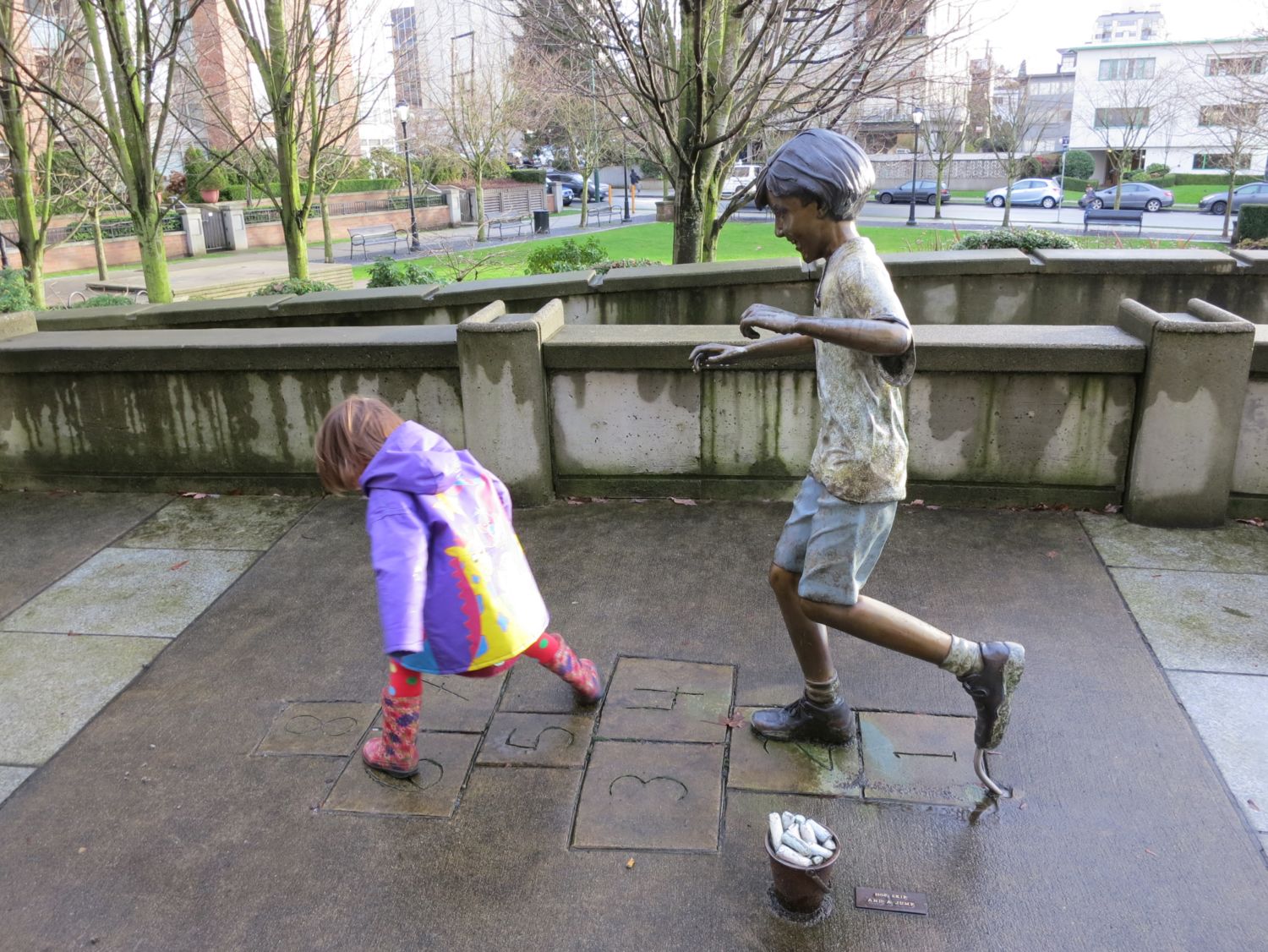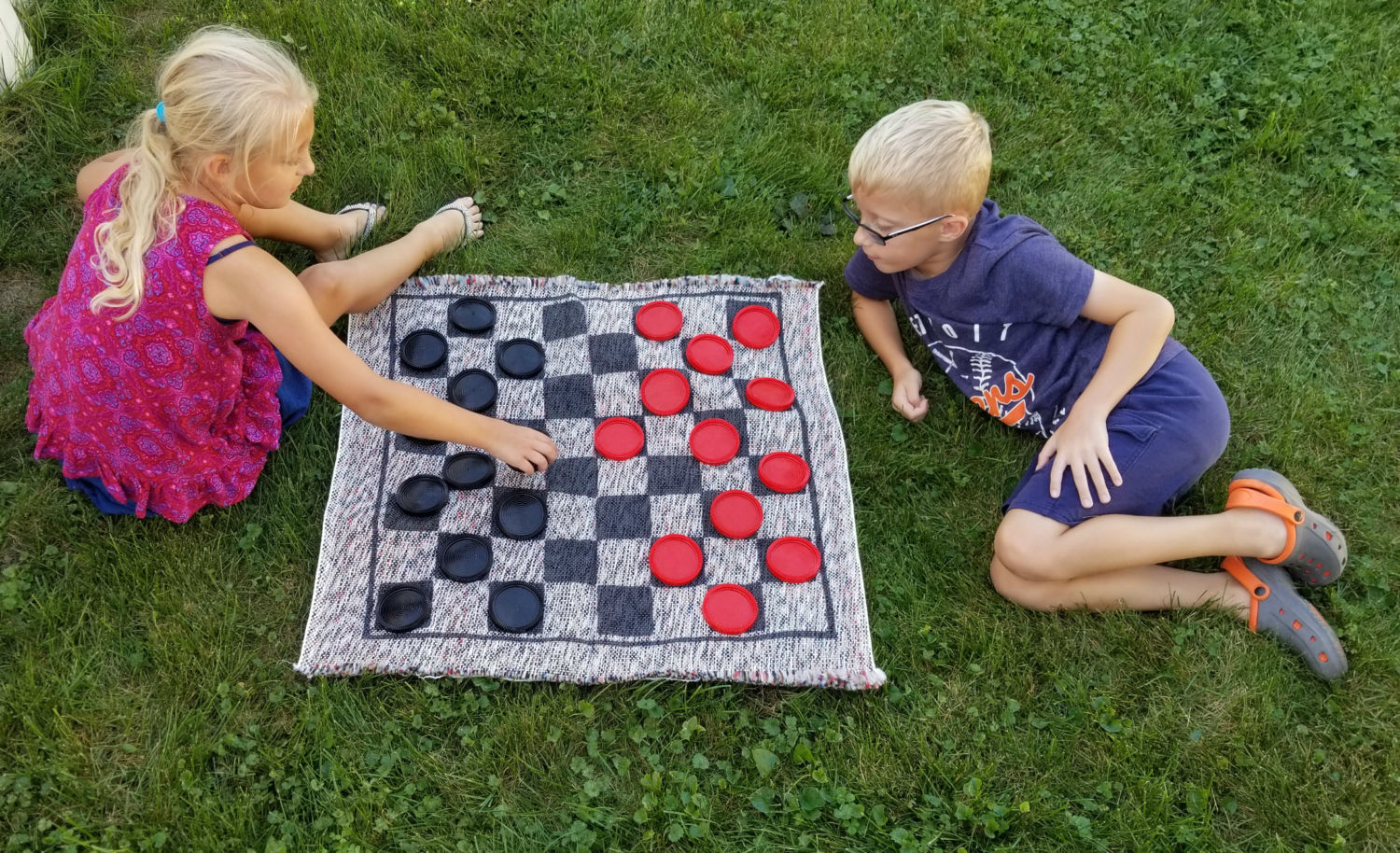 One of my family’s favorite road trips is taking the hour-long drive from our home to Michigan’s Little Bavaria. We travel there so we can enjoy a world-famous Frankenmuth chicken dinner. We go a couple times per year. It has become a family tradition after our meal to stop by a nearby toy shop. The shop always has a nice selection of marbles on display. I let my kids pick out a few as a souvenir of our visit. They’ve accumulated a rather nice collection of marbles over the years.
One of my family’s favorite road trips is taking the hour-long drive from our home to Michigan’s Little Bavaria. We travel there so we can enjoy a world-famous Frankenmuth chicken dinner. We go a couple times per year. It has become a family tradition after our meal to stop by a nearby toy shop. The shop always has a nice selection of marbles on display. I let my kids pick out a few as a souvenir of our visit. They’ve accumulated a rather nice collection of marbles over the years.
During our most recent Frankenmuth family outing, I asked my kids if they knew how to play marbles. The kids replied they thought marbles were just meant to be beautiful things to look at, but I explained that marbles were meant to be played with as part of a game. Of course, they asked me how to play, and then I found myself totally stumped to answer the question—I didn’t know how to play the game!
Wow! Everyone has heard of classic games such as checkers, hopscotch, and marbles. However, I bet a bunch of us don’t actually know how to play them. I’ll admit I didn’t! So, I took some time learning about these games and having fun playing them with my kids. These games may be old school, but they’ll still delight today’s generation of kids. Here’s a summary of how to play marbles, hopscotch, and checkers.
Marbles
Draw a circle on the ground approximately 6 feet in diameter. You can do this by using a finger or stick to draw a circle in dirt on the ground or use chalk to create the playing area on cement. Some people use string to create a circle on carpet or wood surfaces.
How to Play: Each player places the marbles they brought to the game except for one in the middle of the circle. The one leftover is called a “shooter” which is used to target other marbles with. Players take turns flicking or rolling their shooter at their opponent’s marbles within the circle. If a marble is knocked out of the circle as a result of this it is out for the rest of the game. When a player hits any marbles other than his or her shooter out of the circle they get another turn. If no marbles are knocked out than the next player starts a turn.
Each player’s first shot of the game is taken from the edge of the circle. If a shooter marble stays in the circle, players can flick or roll it from its resting spot on a subsequent turn. Players can only use their own shooter marble throughout the game. If a shot bounces it out of bounds, then a player rests it back on the line of the circle in proximity to where it exited. Though when you bump another person’s shooter marble out of the circle, it knocks that opponent out of the game. The last person with marbles left within the circle who hasn’t had their shooter bounced out of the game wins!
Playing Tip: It is important for kids to determine if they are playing “keepsies” before the start of the game. Most of the time players keep their marbles when a game wraps up. However, with keepsies rules, players win the marbles they knock out of the circle to keep. It is important that all players understand whether or not they are risking losing the marbles they own before the game starts. It can avoid arguments or hurt feelings.

Hopscotch
Players draw a hopscotch course with chalk on a sidewalk consisting of interspersed single and double square outlines with each box numbered from 1 to 8 in the sequence they are to be hopped across.
How to Play: Players hop through the course on one foot in the single boxes and use both feet while crossing the side-by-side squares. Before starting a turn, players toss a marker (normally a stone, coin or other small flat item) across the court. That way, it lands within one of the numbered squares. Players must skip over the square the marker lands on without touching it as they cross the course.
Upon reaching the end of the course at [8], players then turn around and hop back through again to [1], However, this time must pick the marker without stepping into the box it rests in. The player then, without entering the square the marker was resting in, continues back to the course’s starting point. Players continue taking turns going through the course.
You are knocked out of the game by stepping on a line or within a box with a marker in it, missing a square in numerical order you were supposed to hop on, or by losing your balance while going back and forth across the course. The last one standing wins the game! If a number of players make it through the game without being knocked out, the first person to complete his or her way back and forth through the course eight times, which is the total number of outlined squares, is the winner.
Playing Tip: Participants should determine if there is a safe zone or rest area at the top of the course where they can take a break before making the return trek of hopping back through boxes in reverse order. Not having a rest area can make for a more challenging game as players must turnaround within the last box without stepping on its border or losing their balance.

Checkers
Checkers is played on an 8×8 checkered board between two people with each player having 12 round game pieces. The board’s spaces alternate between being light and dark squares. Players place their colored discs, which will normally be red or black, on the dark square upon your side of the game board. These discs can only move diagonally forward in the opponent’s direction.
How to Play: If the other player’s disc is in a spot you are blocked from moving into it; but if there is an empty space on the other side it can be “jumped.” When a player’s disc is jumped by their adversary it is removed from the game. Players can jump multiple times in one turn if there are a number of continuous openings to move between. Also, if you have an open jump, it must be taken even if it puts your game piece in an unfavorable position.
If you can move a disc all the way across the board without it being jumped then your game piece is called “Kinged.” Unlike normal game pieces, kinged discs while still only being able to move diagonally can go both forward and backward in direction around the board. The flexibility of movement provides a great advantage to a player who can get their game pieces kinged.
Playing Tip: To win in Checkers, you must take away all your opponent’s discs by jumping them or put your opponent in a position where he or she can’t make a move without losing a game piece. Sometimes games end without a winner or if you are an optimist it could be said both players win! When neither person is left with an option where a move can be made without being jumped by an opponent the game is a draw.
